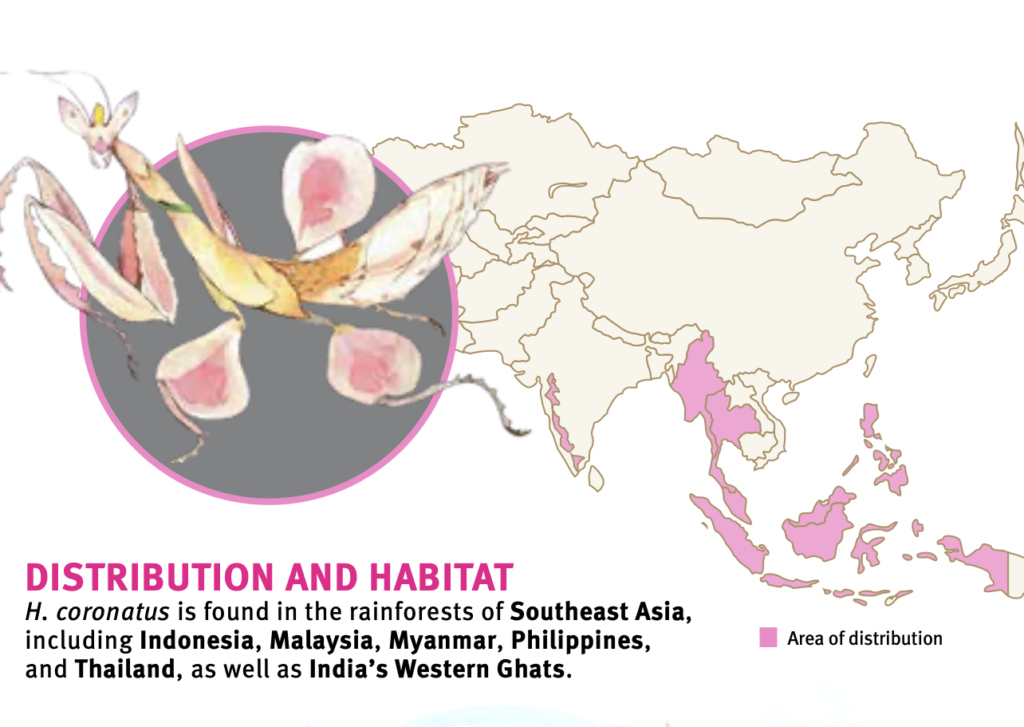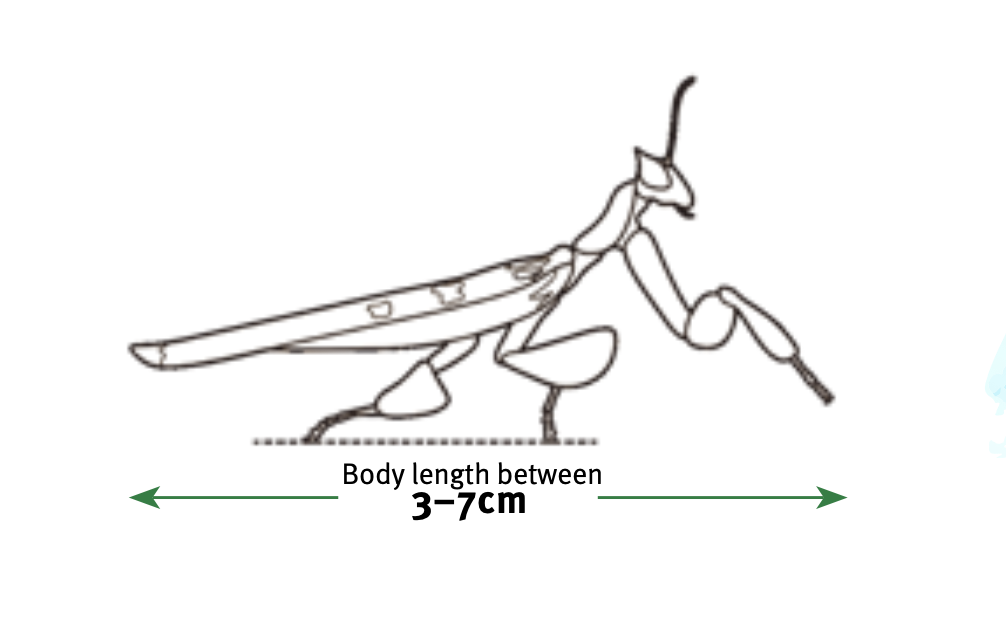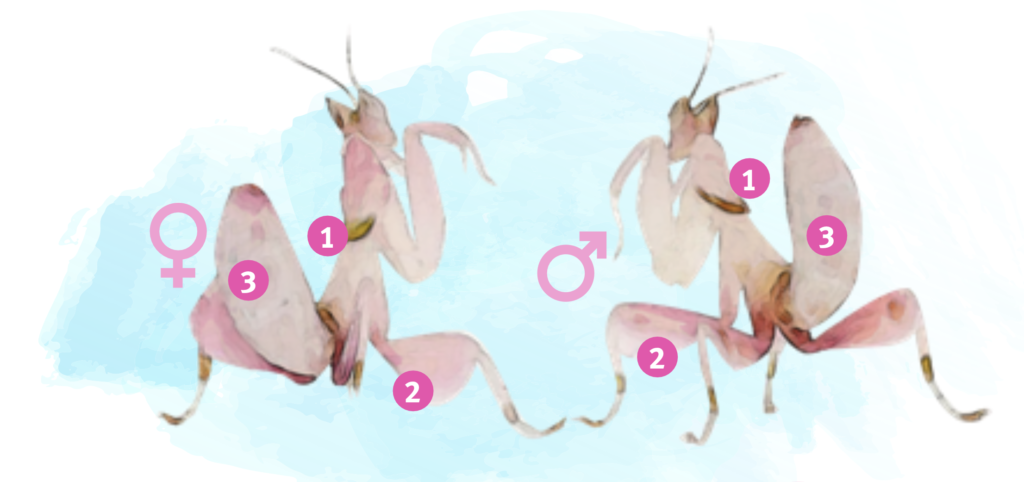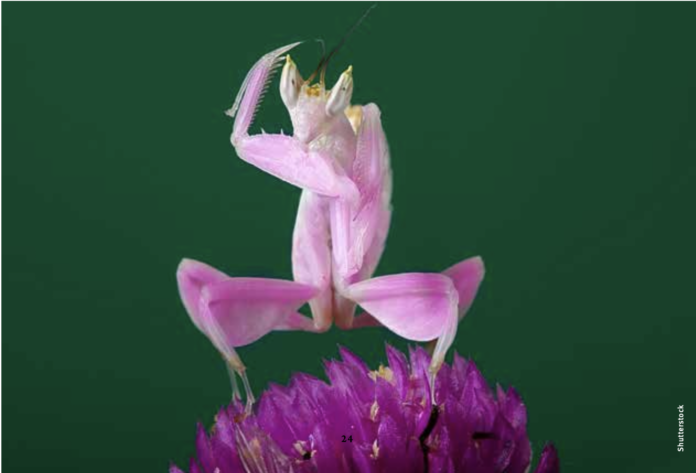With a pink and white body and large lobes on its feet resembling flower petals, Hymenopus coronatus is a beauty, but the life of this “flower mantis” is not all roses.
If you’re a male mantis, you’d better watch out! Your girl may be pretty, but she could be twice your size. Plus, she’s hungry, all the time. And there’s a good chance you are on the menu. To avoid being eaten whilst trying to woo her affections, do your little courtship dance, so she forgets how tasty you look. But if it does all go wrong, don’t hold it against her. Even after you’ve started mating, she may still bite off your head…
Of all the 2,400-plus species of mantises, one is surely among the prettiest – the orchid mantis. As the name suggests, this species of mantis mimics orchid flowers, and while they don’t mimic a specific orchid, their bodies are often white with pink markings, earning it the appellation, pink orchid mantis.
Mainly found in the tropical forests of Southeast Asia, Hymenopus coronatus exhibits some of the most pronounced sexual dimorphism of any species of mantis; while an adult female can grow up to around 7 centimetres in length, the male is generally no bigger than about
3 centimetres. As well as having colours and markings reminiscent of orchids, the four walking legs of the pink orchid mantis resemble flower petals, making it all too easy to mistake this elegant mantis for its namesake flower.
Flower mantises are known as aggressive mimics: They resemble flowers convincingly enough to attract prey that come to collect
pollen and nectar. Almost any small insect is fair game for H. coronatus, from crickets and flies to beetles and bees. And indeed, cannibalism is not uncommon: Peckish pink orchid mantises have even been observed to dine on their own siblings!
DISTRIBUTION AND HABITAT
H. coronatus is found in the rainforests of Southeast Asia, including Indonesia, Malaysia, Myanmar, Philippines, and Thailand, as well as India’s Western Ghats.

Name : Pink orchid mantis, walking flower mantis
Scientific Name : Hymenopus coronatus
scientific classification
Kingdom: Animalia
Phylum: Arthropoda
Class: Insecta
Order: Mantodea
Family: Hymenopodidae
Genus: Hymenopus
Species: H. coronatus

LENGTH
The orchid mantis has an overall body length between 3-7cm, body width of 5-12.5mm, and body height of 3-7mm. The typical lifespan of the orchid mantis is between 5-9 months. Most females measure roughly 6omm, while the males generally measure only 3omm in size.

MALE VS FEMALE
1. Female prothoracic collar is green – it is brown in male
2. The “petals” on the legs of the female are broader than the male’s
3. The female’s abdomen is often broader, and has fewer segments
A BREED APART
The pink orchid mantis is a favourite among insect breeders, but the process is a delicate one, since the male will be lunch very easily if the proper care is not taken. Breeders must first determine the sex of their mantises and keep them in separate enclosures.
Next, the male’s development must be slowed to avoid him dying before the female reaches sexual maturity. This is achieved by keeping him at cooler temperatures (around 18–20°C) and feeding him less. At the same time, the female should be kept
at a much warmer temperature (30–35°C) and fed as much as she will eat daily in the lead-up to mating.
The most important thing is to feed the female well before introducing the male, as his chances of survival are much higher if she is preoccupied with food. The male should be removed from the female’s enclosure as soon as possible after mating – when he detaches himself from her back – or he could well become her next meal.
*AG
For more stories from this upcoming Asian Geographic Pink Edition No.160, please subscribe at https://shop.asiangeo.com











